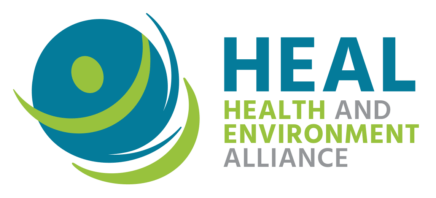As EU member states, regional and local authorities prepare to implement the revised Ambient Air Quality Directive (AAQD), this briefing by the Health and Environment Alliance (HEAL) argues that decision-makers and authorities should pay particular attention to addressing socio-economic inequalities in their clean air efforts. The swift transposition and implementation of the new rules, with strengthened administrative collaboration and the full utilisation of financial support schemes, promise significant progress towards cleaner air across Europe. Improved air quality will be beneficial to everyone and contribute to preventing health inequalities for those living in socioeconomically disadvantaged areas.
In July this year, the hazard classification of three lithium salts was discussed in a meeting of the CARACAL expert group, which brings together representatives from EU member states, the European Commission and stakeholders. This followed an opinion from the European Chemical’s Agency’s Risk Assessment Committee (RAC), which supports a classification of the three salts as known toxicants for reproduction (category 1A), which HEAL believes is justified according to the existing scientific evidence.
Shockingly, industry representatives used this meeting to bring up misplaced arguments in opposition to the proposed classification, including socio-economic considerations which have no place in scientific discussions about hazard classifications.
The three lithium salts in question – lithium carbonate, lithium chloride and lithium hydroxide – are mainly used in the batteries, glass and construction industries. In 2019, ANSES, the French health and safety regulatory agency, started the EU hazard classification process of these substances by submitting a proposal to the RAC, based on scientific evidence of developmental toxicity and effects on fertility.
HEAL welcomed the French proposal, underlining the transparent reporting about the strength of the various studies investigated. Following a public consultation and several committee discussions, in September 2021 the RAC released an opinion in favour of a classification of the compounds as known reprotoxicants (‘toxic for reproduction 1A’) under the EU regulation on the classification, labelling and packaging of chemicals (CLP). It is now for the European Commission to give the final green light on this proposal, after consultation with CARACAL experts.
The CLP classification process is a purely scientific process to identify the intrinsic properties of chemical substances that are put on the market and ensure proper labelling and information throughout supply chains towards workers as well as towards the public. The classification does not translate in any restrictions or bans. Regulators use it and refer to it when taking risk management measures under other legislations (for example, REACH), whereby they balance numerous considerations (including exposure and socio-economic aspects) that cannot and should not be anticipated at the time of the classification discussion.
At the current stage of discussions under the CLP framework, the proposed classification is justified for the following reasons:
- The available scientific evidence included in the dossier and discussed between experts supports a clear pattern of development toxicity and effects on fertility. It is important to note that the evidence has been reviewed and discussed transparently throughout the RAC discussions, including clear documentation of the strengths and weaknesses of each supporting study. This allowed experts to follow a weight of evidence approach and reach the conclusion that a classification of lithium salts as known reprotoxicants (category 1A under CLP) is warranted.
- Industry’s attempt to bring in supposedly new evidence at a late stage in the process is irrelevant in content and form. During the July CARACAL meeting, industry representatives claimed that one specific study (Boyle et al. 2016) puts the classification proposal into question. This is not correct. First of all, the study is not new (considering it dates back to 2016) and industry itself did not include it in its initial literature screening. Second and most importantly, the study does not address lithium compounds and is therefore irrelevant to the present discussion.
- Finally, socio-economic considerations have no place in a hazard classification discussion. For the time being, EU experts are discussing the scientific evidence base supporting the identification of the intrinsic properties of the three salts, and this has nothing to do with socio-economic aspects. Furthermore, supposed consequences in relation to those aspects are at present only speculations and are not based on any hard evidence of plans for regulatory measures regarding the use of lithium salts in specific sectors. Should such plans develop in the future, they would be discussed under other legislations (for instance REACH) and would duly consider relevant considerations (e.g. the strategic relevance of the use of a substance for the economy and objectives under EU Green Deal, or broader socio-economic considerations). In any case, attempts to derail a hazard classification process under CLP with such arguments is fundamentally misplaced.
Natacha Cingotti, Health and Chemicals Programme Lead at HEAL, explains:
“There is absolutely no reason to question the scientific evidence supporting the identification of the dangers of lithium salts, which is very transparently documented in the RAC opinion, and the belated attempts to derail the proposed classification are irrelevant in both content and form.
The wheels of EU chemicals classifications are already turning too slow and, sadly, any additional distractions only add unnecessary workload on authorities, when there is so much to do to deliver the commitments of the EU Chemicals Strategy. It’s time to focus on the science and move on with the proposed hazard identification.”



